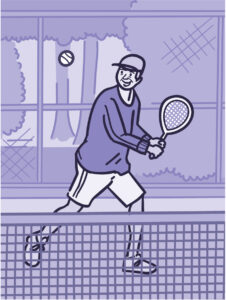- Performing Pediatric Physical Examination
- Perform the examination in an appropriate, nonthreatening area:
- Have room well-lit and decorated with neutral colors.
- Have room temperature comfortably warm.
- Place all strange and potentially frightening equipment out of sight.
- Have some toys, dolls, stuffed animals, and games available for the child.
- If possible, have rooms decorated and equipped for different-age children.
- Provide privacy, especially for school-age children and adolescents.
- Provide time for play and becoming acquainted.
- Observe behaviors that signal the child’s readiness to cooperate:
- Talking to the nurse
- Making eye contact
- Accepting the offered equipment
- Allowing physical touching
- Choosing to sit on the examining table rather than the parent’s lap
- If signs of readiness are not observed, use the following techniques:
- Talk to the parent while essentially “ignoring” the child; gradually focus on the child or a favorite object, such as a doll.
- Make complimentary remarks about the child, such as about his or her appearance, dress, or a favorite object.
- Tell a funny story or play a simple magic trick.
- Have a nonthreatening “friend” available, such as a hand puppet, to “talk” to the child for the nurse.
- If the child refuses to cooperate, use the following techniques:
- Assess reason for uncooperative behavior; consider that a child who is unduly afraid may have had a traumatic experience.
- Try to involve the child and parent in the process.
- Avoid prolonged explanations about the examining procedure.
- Use a firm, direct approach regarding expected behavior.
- Perform the examination as quickly as possible.
- Have an attendant gently restrain the child.
- Minimize any disruptions or stimulation.
- Limit the number of people in the room.
- Use an isolated room.
- Use a quiet, calm, confident voice.
- Begin the examination in a nonthreatening manner for young children or children who are fearful:
- Use activities that can be presented as games, such as test for cranial nerves
- I. Olfactory Nerve
- II. Optic Nerve
- III. Oculomotor Nerve
- IV. Trochlear Nerve
- V. Trigeminal Nerve
- VI. Abducens Nerve
- VII. Facial Nerve
- VIII. Auditory, Acoustic, or Vestibulocochlear Nerve
- IX. Glossopharyngeal Nerve
- X. Vagus Nerve
- XI. Accessory Nerve
- XII. Hypoglossal Nerve
- Use approaches such as Simon Says to encourage the child to make a face, squeeze a hand, stand on one foot, and so on.
- Use the paper-doll technique:
- Lay the child supine on an examining table or floor that is covered with a large sheet of paper.
- Trace around the child’s body outline.
- Use the body outline to demonstrate what will be examined, such as drawing a heart and listening with a stethoscope before performing activity on the child.
- If several children in the family will be examined, begin with the most cooperative child to model desired behavior
- Provide choices, such as sitting on table or in parent’s lap.
- Allow the child to handle or hold equipment
- Encourage the child to use equipment on a doll, family member, or examiner.
- Explain each step of the procedure in simple language.
- Examine the child in a comfortable and secure position:
- Sitting in parent’s lap
- Sitting upright if in respiratory distress
- Proceed to examine the body in an organized sequence (usually head to toe) with the following exceptions:
- Alter sequence to accommodate needs of different-age children
- Examine painful areas last
- In an emergency, examine vital functions (airway, breathing, and circulation) and injured area first
- Reassure the child throughout the examination, especially about bodily concerns that arise during puberty.
- Discuss findings with the family at the end of the examination.
- Praise the child for cooperation during the examination; give a reward such as a small toy or sticker.
- Use activities that can be presented as games, such as test for cranial nerves
- Perform the examination in an appropriate, nonthreatening area:

Working Out to Stay Sharper
Can Exercise Keep Your Brain Healthier? En español Send us your comments (link sends e-mail) We’ve all heard that exercise is good for us. Experts



